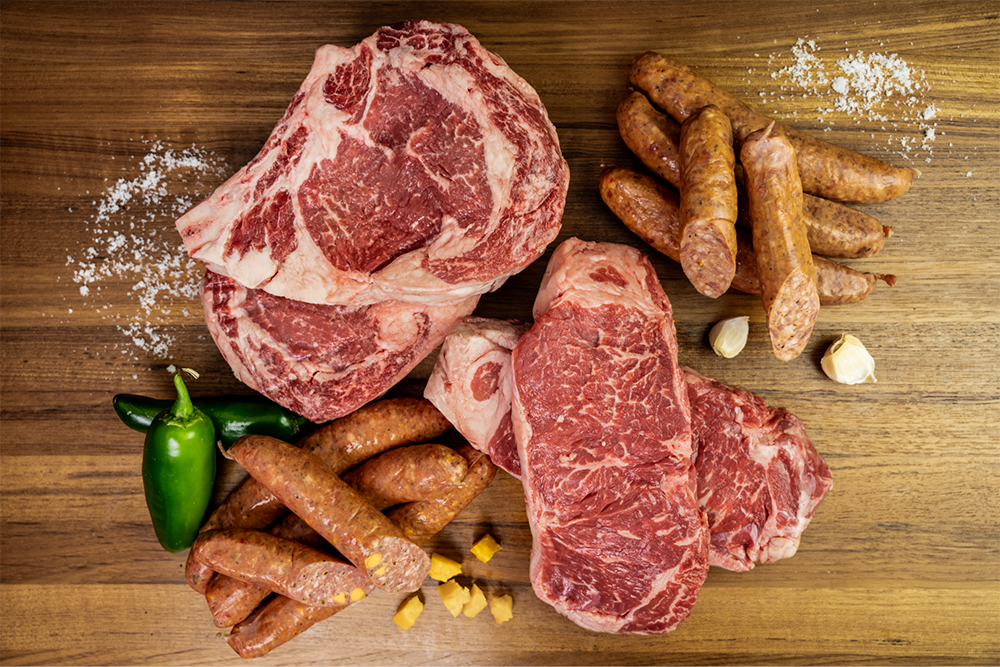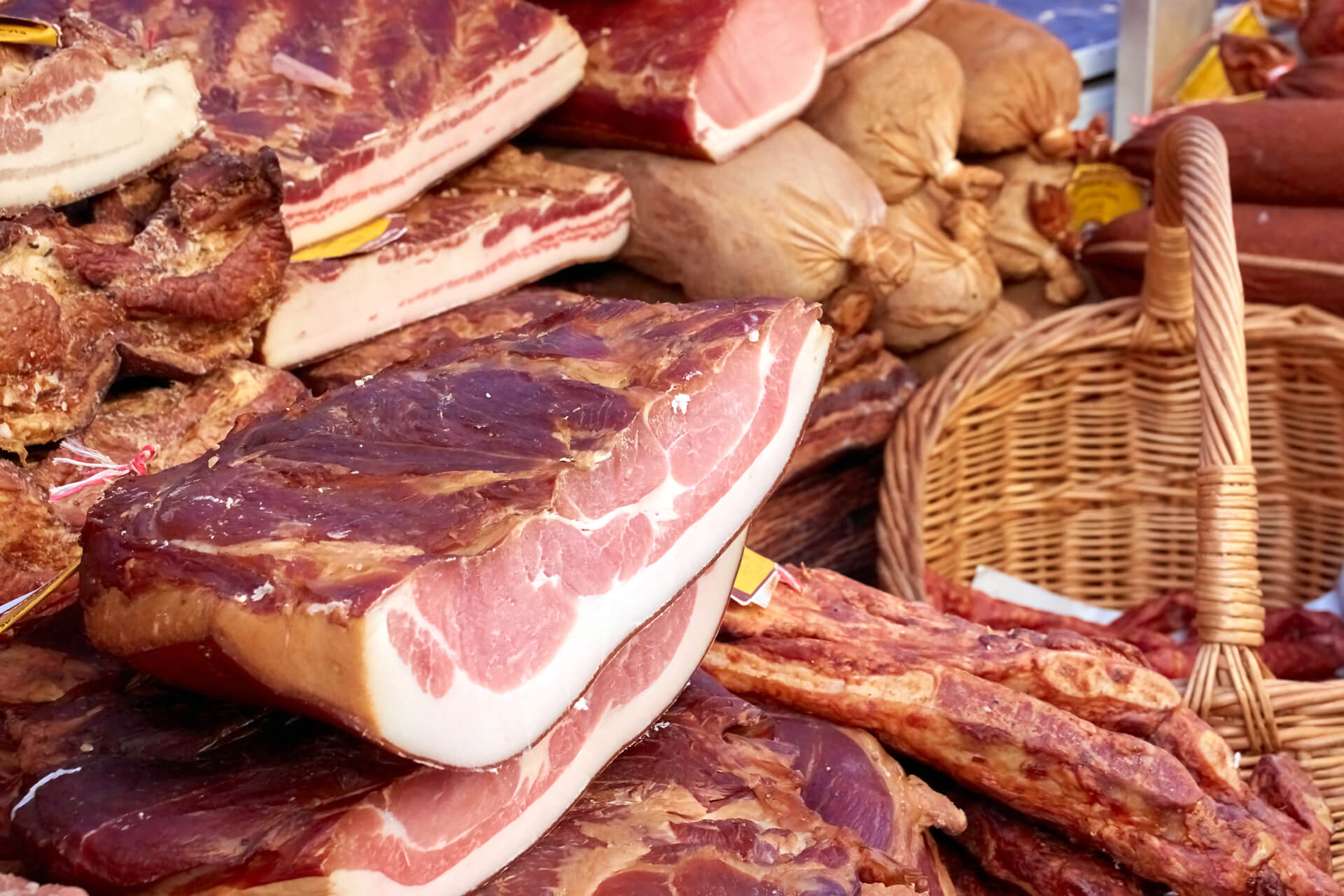Reveal the Art of the Butcher's Cut in a Modern Meat Market
In the ever-evolving landscape of modern meat markets, the butcher's cut has actually transcended its standard origins, merging age-old craftsmanship with modern techniques. bagley farms meat market edwardsville il. Today's butchers are not just processors of meat; they are experienced artisans who emphasize sustainability and moral sourcing. Their experience in picking and preparing cuts tailored to details cooking needs supplies an unequaled dining experience. Yet, what really establishes the contemporary butcher apart is their ability to build a much deeper connection in between consumers and the beginnings of their meat. How do these masters equilibrium custom with development, and what effects does this have for the future of meat usage?
Development of Butchery Techniques

The mid-20th century saw butchery strategies additionally fine-tuned by scientific insights into muscle biology and meat aging, boosting both inflammation and preference. Developments like vacuum packaging and refrigeration extended item shelf-life, enabling butchers to branch out offerings and improve quality control. This duration likewise marked the surge of customized devices, such as band saws and meat slicers, which increased accuracy and performance in meat processing.
The 21st century has presented electronic technology right into the butchery realm. Computerized systems currently assist in monitoring animal provenance and optimizing cuts to fulfill certain customer choices. In addition, a renewal in artisanal butchery has arised, mixing standard skills with modern knowledge to accommodate customers looking for moral and sustainable meat choices. This evolution emphasizes a dynamic interaction between custom and development, conference contemporary demands while maintaining the craft's heritage.

Comprehending Meat Cuts

Understanding the intricacies of meat cuts is important for both butchers and consumers looking for top quality and worth. Each cut comes from a different part of the animal, imparting one-of-a-kind tastes, appearances, and cooking methods. Mastery of these distinctions not just improves culinary experiences yet additionally makes the most of the utility of each carcass. For butchers, precise cuts reflect ability and respect for the craft, guaranteeing minimal waste and optimal return.
The main groups of meat cuts include primitive, sub-primal, and retail cuts. Butchers then damage these down further right into sub-primal cuts, before lastly producing retail cuts offered to customers, like ribeye or tenderloin.
Comprehending muscular tissue composition is vital; muscles utilized extra frequently by the animal often tend to be harder and are best suited for sluggish food preparation methods, while less-used muscle mass, like those discovered in the loin, are extra tender and ideal for barbecuing or roasting. Knowledge with these differences empowers consumers to make click site enlightened choices, enhancing their culinary endeavors.
Selecting Quality Meat
Picking the ideal meat includes more than just selecting an aesthetically attractive piece from the display screen. The art of choosing quality meat requires a critical eye and understanding of particular attributes that indicate quality and excellence.
Secondly, take into consideration the marbling, which refers to the white flecks of fat within the muscular tissue. Appropriate marbling is a key indication of inflammation and taste, as it thaws during food preparation, boosting the meat's juiciness. Bear in mind, higher marbling frequently associates with superior top quality cuts, such as USDA Prime.
Structure is another important element; meat needs to feel firm to the touch, not slimed or overly soft. Furthermore, bear in mind the aroma. Fresh meat must have a clean, neutral odor, without any kind of sour or off-putting odors.
Combining Cuts With Food Preparation Methods
Effectively coupling cuts of meat with the appropriate cooking methods is vital for attaining optimum taste and appearance. These methods enhance the meat's natural flavors and guarantee a juicy coating.
Alternatively, harder cuts like brisket and chuck roast are abundant in collagen, which damages down right into jelly when prepared gradually. These cuts are excellent Read Full Article for braising or slow-moving roasting, allowing the meat to soften over time and develop deep, complex flavors. Similarly, cuts such as brief ribs and pork shoulder prosper with slow-cooking approaches, where expanded cooking times transform their durable appearances right into delicious meals.
Lamb shanks and oxtail, which need extended cooking to soften, are best candidates for stewing or slow-moving simmering. These techniques coax out rich, passionate tastes while preserving moisture. By recognizing the special attributes of each cut, chefs and home chefs alike can raise their culinary productions, making certain each meal is both satisfying and remarkable.
The Butcher's Function Today
Browsing the developing landscape of the modern-day meat market, the butcher's function today extends past mere prep work of cuts. Contemporary butchers are culinary craftsmens, teachers, and advocates for lasting methods. They link the space between the farm and the fork by ensuring honest sourcing, understanding pet husbandry, and focusing on transparency in the supply chain. This change mirrors the growing consumer need for quality over amount, where provenance and animal well-being are vital.
Along with crafting accurate cuts, butchers currently involve directly with customers, offering cooking recommendations and customizing options to fit private needs and preferences. Their competence in meat aging, marbling, and taste profiles equips customers to make enlightened decisions, improving their culinary experiences. This individualized service look at this website exemplifies the butcher's advancing function as a relied on consultant in the cooking area.
Moreover, butchers are critical in decreasing waste, utilizing entire animals to develop diverse products such as sausages and supplies - bagley farms meat market edwardsville il. This extensive technique not just values the animal however likewise straightens with contemporary sustainability goals. This way, the modern-day butcher personifies both tradition and innovation, adapting to an ever-changing market while protecting the virtuosity and honesty of their craft

Verdict
The contemporary butcher's craft intricately weaves traditional strategies with modern-day advancements, highlighting lasting techniques and honest sourcing. Proficiency in recognizing diverse meat cuts and quality signs empowers butchers to give educated recommendations, straightening certain cuts with ideal cooking techniques. This knowledge not just raises cooking experiences but additionally enhances the connection between customers and the origins of their food. By recognizing historical methods while welcoming contemporary needs, the butcher's role stays vital in today's advanced meat market.
Comments on “Discover the Neighborhood Taste at Bagley Farms Meat Market Edwardsville IL: Fresh and Delicious”